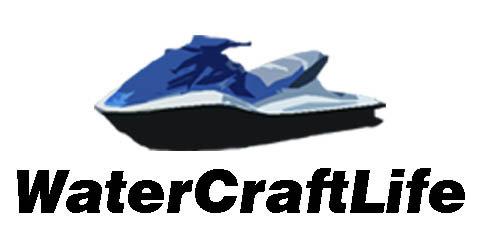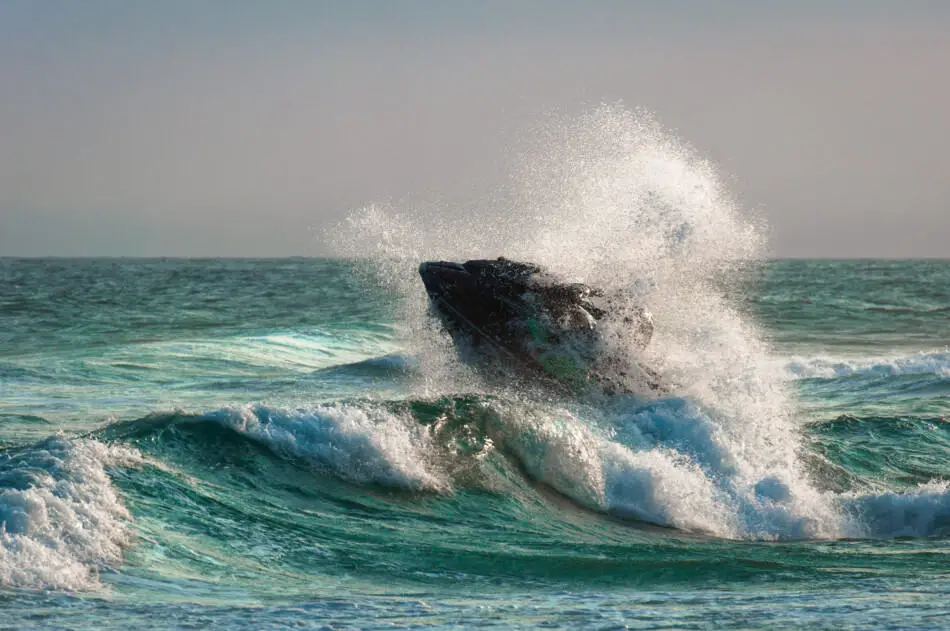This seems to be a controversial topic as it can be done, but will require a LOT of time, money, and effort. I have also seen where it has been done. It seems to complete this project, it would take a lot of money, time, and ingenuity to accomplish this. It would require the understanding of both the jet ski and how they are designed and to run along with all of the systems that makes them operate. It would also take the understanding of how a motorcycle engine runs and operates and the ability to tie the two together where they would run and operate in unison.
Can you put a motorcycle engine in a jet ski?
There are many jet skis with motorcycle engines floating around the world so to answer the questions, yes you can put a motorcycle engine in a jet ski. The time, money, and effort may not make it worth it to complete a project like this, but if you have a spare motorcycle and a spare jet ski and like to tinker, this may be a project for you.
Would Putting a Motorcycle Engine in a Jet Ski be Legal?
Switching engines in a jet ski is not illegal, and is done all the time. There are various marine codes that have to be followed on watercraft. As long as you follow these guidelines you should be okay as far as the legal aspect goes. Once you have spent a large sum of money and many hours of work getting this to all work together, and your jet ski is running, there are things that could get you in trouble.
Some motorcycle engines are designed to be really fast. In the United States on the public waterways, there are maximum speeds that you are allowed to ride. That speed is around 65 mph. When you get over this speed you will be breaking the law. This law has been designed for your safety and that of others that are also using the public waterways. Make sure that you have a safe and controlled place to ride before you go into this investment.
Motorcycle and PWC Companies
Motorcycle Companies such as Yamaha and Kawasaki have dominated the market when it comes to personal watercraft or jet skis. Most people call all personal watercraft jet skis no matter of the brand. In reality jet ski is actually a registered trademark of Kawasaki. The engines that are put into the personal watercrafts are different than the engines that are put in the motorcycles made by the same companies. Even though the engines for both offer quality performance and power there are federal guidelines that must be followed for both. In the United States the top speed performance for normal riding in the public waterways for a jet ski is only 65 MPH. The engines that are designed for motorcycles follow under different guidelines and that must be followed.
Most of the time, a motorcycle engine is actually smaller than a PWC motor. Many motorcycle engines are 250cc or even 450cc in some cases. Most jet skis have 700cc’s or more. In todays muscle craft, you will find engines about 1,500cc on average.
With PWC motors being more powerful and larger, there may not be a reason to put a motorcycle engine in a PWC.
Reasons to put a Motorcycle or Larger Engine in a PWC
There is only one reason to put a motorcycle engine in a PWC, and that is if you have an older stand up model or Kawasaki X2. I have seen a few builds where they remove the 650cc motor and install a new 1,100cc motor giving much more power especially in some of the older Kawasaki’s.
Similarities in The Engines
In the designs and performance curves, the motorcycle engines are remarkably similar to those engines that are used in the high-performance personal watercrafts or jet skis. They are designed to be lightweight and are created so that they offer high RPMs to offer their rated power that is needed for the performance that is expected from these types of engines.
Difficulties of Installing a Motorcycle Engine in a PWC
There are many difficulties that would have to be considered and remedies that would have to be created to make this a safe and productive ride.
Cooling
Motorcycle engines are built to be air cooled. Jet ski engines are water cooled. You would have to build a water cooled heat exchanger to install a motorcycle engine into a PWC, which may be way more time and effort than just buying a larger jet ski.
Corrosion
One consideration seems to be that motorcycle engine makers many times use a mix of metals and alloys in creating their motors. That is great and works well when you are mixing a mix of 50% water and propylene glycol.
The problem on a jet ski when putting the motor in is if you hit the waterways of salt water, which many like to do. This can cause major corrosion so would be a problem that would have to be taken care of somehow.
To add a closed coolant system would add a lot of additional weight and would slow down and defeat the purpose of the increased speed that this engine could add to your personal watercraft. Leaving the cooling system open would only increase the promotion of corrosion and creating damage to your engine.
Longevity
When a jet ski rider takes out on the lake even on a powerful run or races, he normally will not want to spend time working and tinkering on his watercraft. He wants to be able to run it hard and get many hours out of the time and investment of his ride.
Sportster bike engines are known for having to be tinkered with and the riders that select this type of bike know that every thousand to two thousand miles that their bike must be worked on and tuned and sometimes even rebuilt. A jet skier normally will want more longevity out of the motor in their jet ski.
Ventilation
Ventilation is another factor that must be carefully considered. With watercraft there are various codes, standards, and regulations for how much airflow they get. With gasoline engines and the electrical systems there must be extreme caution to make sure that there is plenty of ventilation to increase cooling and fresh air intake and depending upon the design to keep the vapors from creating sparks when the key is turned on to keep from having a huge explosion on your watercraft. There are certain concerns when it comes to a personal watercraft that would not create a concern on a motorcycle.
Successful Installation of a Motorcycle Engine in A Jet Ski
In 2015 a 1,300 cc Suzuki Hayabusa engine was put into a jet ski. This created a speed demon of a jet ski on the waterways. In the jet ski, this engine made some super-fast speeds along with a long high tail of water that shot out behind as the rider was known for showing off and hot dogging this jet ski. It was a success of putting a motorcycle engine into a jet ski.
This Suzuki GSX1300R was first made an appearance in 1999 in the fastest production motorcycle in the world at this time. It easily clocked out at a top speed of 190 mph. Fast motorcycle engines have come a long way since then.
Even though Suzuki has not really entered into the world of personal watercraft like Kawasaki and Yamaha has, Suzuki engines were used in the Tigershark jet skis in the 1990s.
Many Attempts Have Been Made
There are many videos on You Tube that can be watched on how various people have tried to put motorcycle engines into their jet skis. Many of these were not done professionally and are done by people at home. Most of what I have seen were not successful even to the point that the engine locks up and no longer runs.
Is It Worth It to put a Motorcycle Engine in a Jet Ski?
We now know that many jet skis have engines that are made by the same companies that make motorcycle engines. There are reasons that they do not use the same engine in the jet ski that they use in the motorcycles. Many of these reasons have to do with marine codes for the waterways and the ability of the motor to perform the same way in both.
There are many similarities in the two engines but there must be differences in order for them to work on land and in the water. A simple switch out the jet ski engine and drop in a motorcycle engine out of a bike will not work.
Many changes must be made in order for this switch to work. Many hours of work and a substantial amount of money to see if your creation will work on the waterways could be a challenge for many. Others will just go purchase a jet ski that has already been designed for faster speeds and is ready for the ride.

